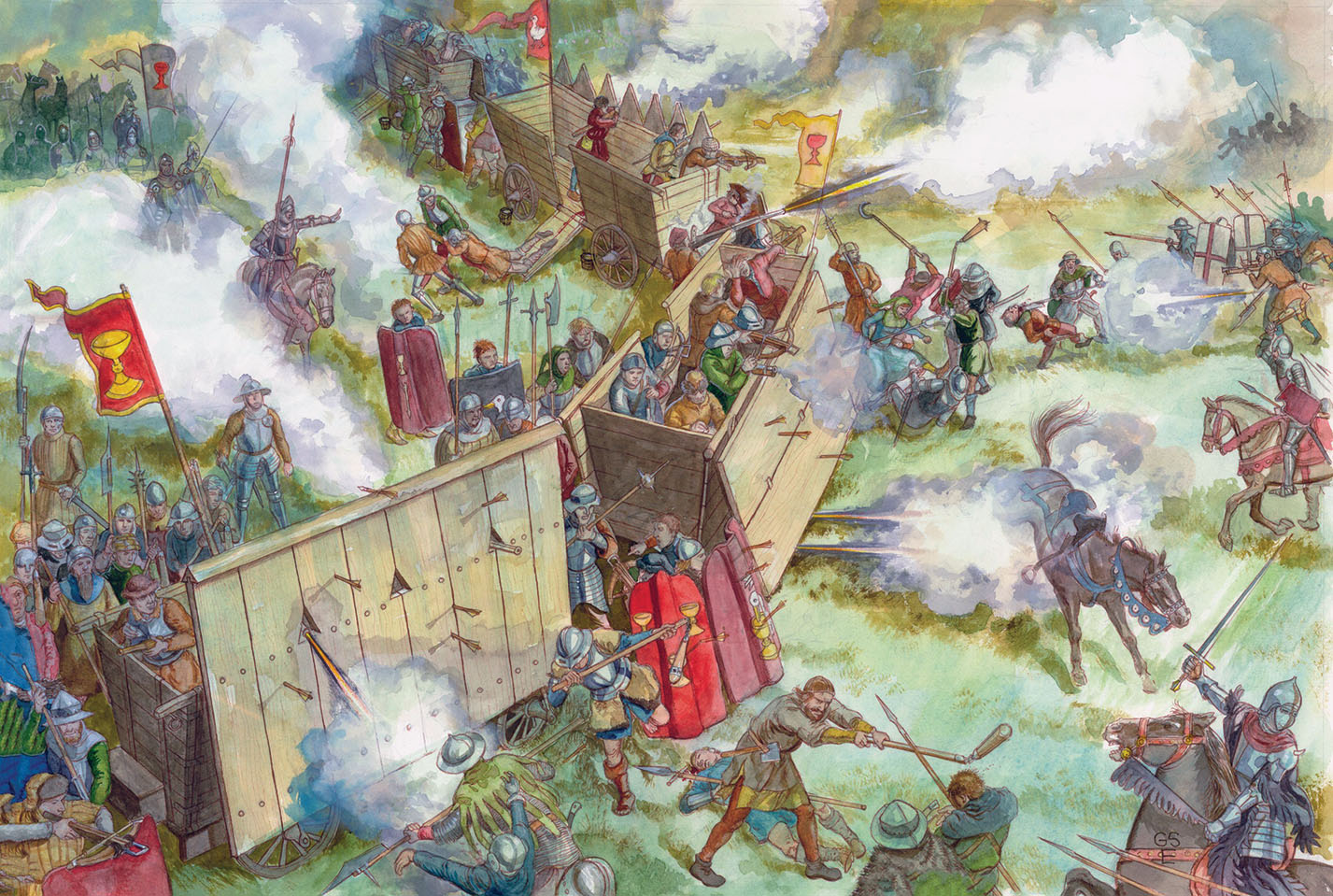In 1415 Roman Catholic Church officials condemned Czech Christian theologian and reformer Jan Hus for heresy and burned him at the stake. But attempts to suppress his followers (Hussites) in the Kingdom of Bohemia failed. When King Sigismund of Hungary inherited the throne of Bohemia in 1419, he sought Pope Martin V’s aid in launching an anti-Hussite crusade. That triggered a general revolt in Bohemia, pitting the Hussites and their supporters against those loyal to Sigismund, the pope and the Catholic Church.
The Hussite armies comprised primarily militiamen drawn from the peasantry or urban commoners. Thus Hussite soldiers were never as well equipped as their enemies, who possessed far greater numbers and resources. What the Hussites could boast was a cadre of highly skilled military leaders, of whom the most prominent was the one-eyed and later blind general Jan Zizka (c.1360–1424). He developed the innovative tactical system known as the Hussite wagon fort, or wagenburg, which proved almost unbeatable.
For at least a century prior European armies had used the ubiquitous wagon for support and to create temporary field fortifications. Zizka’s war wagons, however, were purpose built.
Manufactured according to a common template, they were heavily reinforced and had side loopholes to accommodate projectile-firing weapons. Each wagon was essentially a mobile fortress, manned by a crew of some 20 soldiers armed with field guns, hand cannons, crossbows and polearms.
In battle the Hussites formed the wagenburg by chaining their wagons together in a square or circle, providing their crews the protection necessary to operate their weapons effectively. It also allowed them to concentrate their fire, whereas on a battlefield they would have been more widely dispersed.
Worn down by the Hussites’ concentrated fire, exposed attackers would lose momentum and cohesion. The Hussite infantry would then exit the wagenburg to attack the enemy’s flanks and rear, pinning them against the wagons. In the final stages of battle the Hussite cavalry would emerge and pursue fleeing enemy troops, transforming defeat into utter catastrophe.
While the Hussites defeated five papally declared anti-Hussite crusades, infighting between their two main factions—the moderate Utraquists and radical Taborites—proved their undoing.
Ultimately, the Utraquists accepted an invitation from Sigismund and the Catholic Church to negotiate an accord, while the Taborites objected, sparking civil war. In a May 30, 1434, clash at Lipany in central Bohemia attacking Utraquists feigned retreat to lure Taborites from their wagenburg. Sending their cavalry into the open wagenburg, the Utraquists killed, drove off or captured the Taborites, subsequently burning alive hundreds of prisoners in nearby barns. The Utraquists then made peace with Sigismund and Catholic authorities.
Lessons: Continually innovate. Innovation doesn’t require creating something entirely new. Combining old tactics or technologies in new ways can produce highly effective results. Fight the battle you want to fight. The Hussites adhered to the defensive tactics of their wagenburg in battle after battle, negating their enemies’ tactical advantages and forcing them to make costly assaults. Maintain a united front. Despite impressive victories, the Hussites Beware the feigned retreat. The Utraquists lured the Taborites’ out of their wagenburg and soundly defeated them in the open.
ultimately succumbed to infighting.
This article appeared in Military History magazine. For more stories, subscribe and visit us on Facebook.





